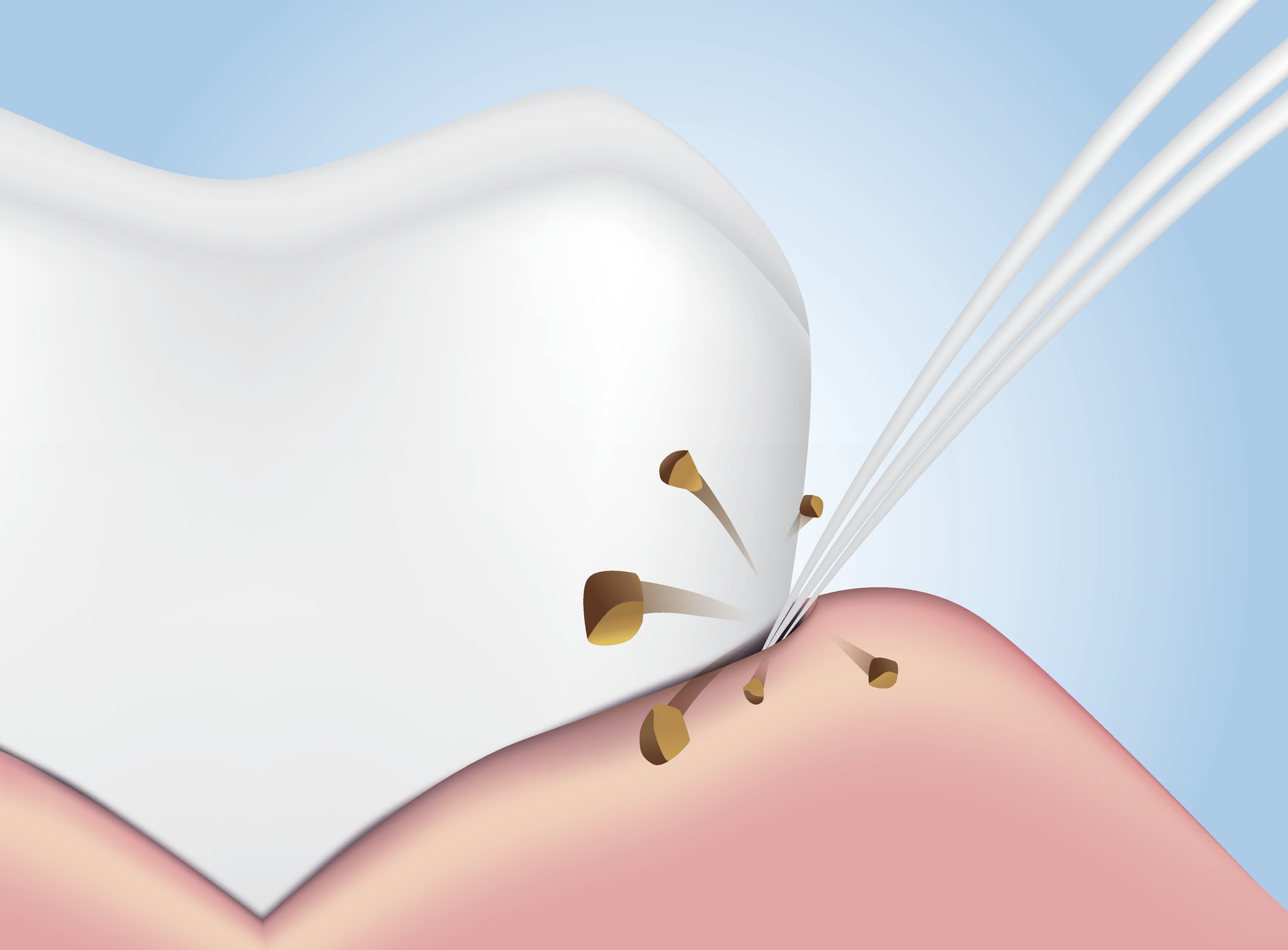Have you ever run your tongue over your teeth after brushing expecting to feel a nice, smooth surface, but instead you find your teeth gritty, slimy, or even rough and textured? What you are feeling is excessive plaque on teeth. Dental plaque is a nasty deposit of bacteria that get stuck on teeth, building up until it can lead to dental problems. Keep reading for a rundown on how to remove plaque including an overview of how to remove plaque from teeth naturally.
Plaque—the Clear, Silent Killer of Dental Health
Plaque is a gunky, colorless film composed of bacteria that form and get stuck on and between teeth, as well as on the border of the upper and lower gum lines. While plaque can form throughout the mouth, it has a tendency to collect in and around the deep crevices of the molars. Plaque is mostly clear, but when it starts to build up, it can cause teeth to take on a yellowish hue.
Plaque forms when liquid and solid food particles are able to stay on teeth after eating. A lack of teeth cleaning at home allows plaque to remain on teeth, promoting its accumulation. In order for plaque to increase, it needs bacteria, sugar from food, and saliva. Whenever a person eats anything that has sugar in it, the bacteria already present in the mouth feed off the sugar to make acid. A chemical reaction then occurs between the acid, saliva, and leftover particles of food to create the microbial, sticky, hard plaque.
Problems and Risks Due To Excessive Plaque on Teeth
Signs of excessive plaque on teeth include discolored teeth, inflamed gums, and bad breath. Children, older adults, and those who aren’t able to seek out dental care due to financial difficulties are the groups with the highest risk of plaque build-up.
Without regular teeth cleaning at home, the acids formed by bacteria in the mouth start to erode tooth enamel, wearing it down until tooth decay and cavities happen. If plaque forms below the gums on tooth roots, the bones supporting your teeth can start to break down from the acids.
Plaque build-up on the gum line can cause gingivitis, which is a mild gum disease that can lead to a more serious condition called periodontitis. In periodontitis, toxins are created by plaque that can cause irritation to the gums, when then produces swelling, bleeding, and infection.
When plaque stays on teeth for days at a time, it will calcify and turn into a hard, dense material called tartar. Tartar is extremely hard to remove from teeth and has to be scraped off at a visit to the dentist.
How To Remove Plaque
It’s important to know how to remove plaque so that the build-up does not lead to dental problems or other diseases. If you are wondering how to remove plaque from teeth, the short answer is you can’t unfortunately. Plaque can never be removed completely, but it can be kept under control with good habits in dental hygiene and regular visits to your dentist. Removing plaque on a regular basis is important because it can prevent the acids that cause tooth decay, toxins that lead to gum disease, and tartar from forming on teeth.
It is recommended to visit your dentist every six months for a professional teeth cleaning and dental exam. During your cleaning appointment, the dental hygienist or the dentist will get rid of all the plaque and tartar that has built up in the mouth through a process called “scaling.”
Your dentist can also apply a sealant to your teeth during your appointment. Sealant is a thin, protective coating with a plastic-like consistency. It is applied to the back molars where plaque build-up is the most excessive. While sealants are more frequently used on children’s teeth, there are adults that can benefit from their use as well. According to the Centers for Disease Control, the use of sealants on kid’s teeth can decrease tooth decay and prevent cavities by 80%.
How To Remove Plaque From Teeth Naturally
Removing plaque from teeth naturally is easy with regular teeth cleaning at home. The first step is properly brushing for at least two minutes two times a day. Following this step is the best method of removing plaque. Electric toothbrushes have shown to be the most effective in getting rid of excessive plaque on teeth compared to manual toothbrushes. Be sure to use a toothpaste containing fluoride as it helps to repair any damage to the enamel.
Flossing is the next essential step to remove plaque from teeth at home. Regardless of how well you brush your teeth, flossing is the only way to get the plaque out from between your teeth and prevent tartar from forming in these areas that are so hard to get to with a toothbrush.
Eat a balanced diet that is low in sugar and carbohydrates as this will help prevent the build-up of plaque. Be sure to drink water during your meals and snacks, as well as after eating, as it can help rinse away excess food particles in the mouth.
Finally, do not smoke. People who smoke or use other oral tobacco products are more prone to tartar formation than non-tobacco users.
Make an Appointment Today
Now, that you know how to remove plaque, you can focus on a different aspect of your dental health such as fixing crooked teeth. You can schedule a consultation with one of our dentists at Arkansas Family Dental to discuss your options.
Eat a balanced diet that is low in sugar and carbohydrates as this will help prevent the build-up of plaque. Be sure to drink water during your meal and after as it can help rinse away excess food particles in the mouth.
Learn more. about the importance of proper teeth cleaning by downloading our FREE infographic.

